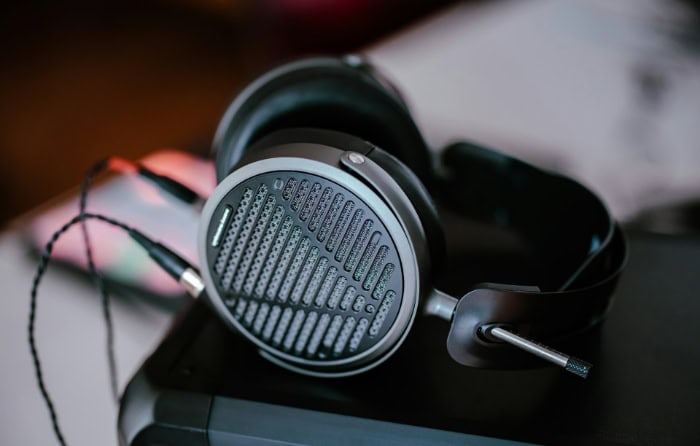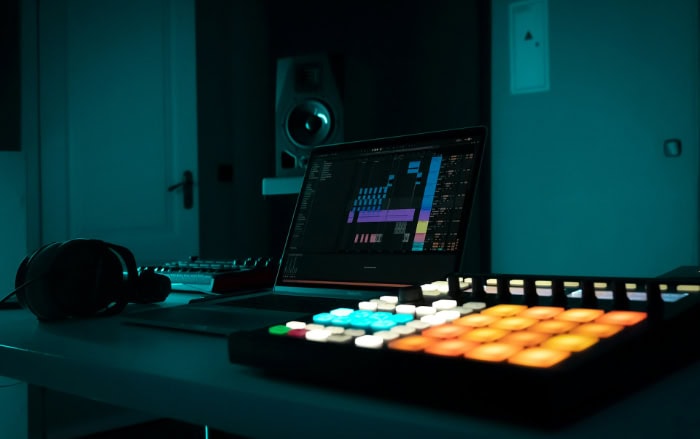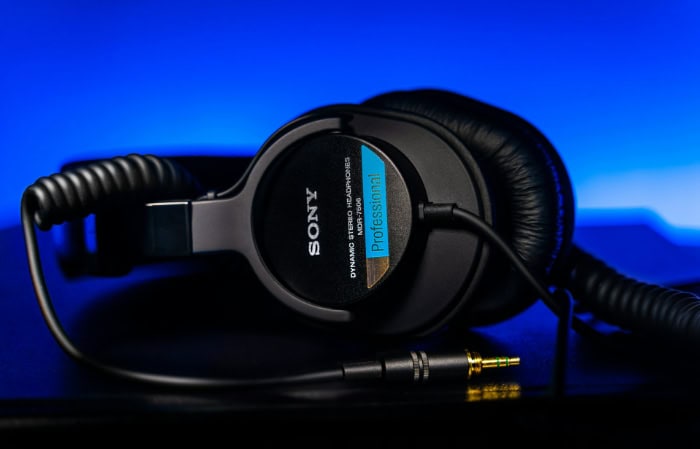FLAC vs. MP3: What's Your Sound Strategy?

Audio formats shape our digital music experience, influencing everything from sound quality to storage requirements. FLAC and MP3, two prominent players in this arena, represent different philosophies in audio compression.
FLAC champions pristine sound reproduction, while MP3 prioritizes space efficiency. As streaming services and personal music libraries grow, the choice between these formats becomes increasingly relevant.
Audio Quality Comparison
The debate between FLAC and MP3 often centers on audio quality. These formats represent two different approaches to digital audio compression, each with its own impact on sound fidelity.
Lossless vs. Lossy Compression
FLAC (Free Lossless Audio Codec) utilizes lossless compression, which means it preserves all the original audio data. When a FLAC file is decompressed, it's identical to the original source audio.
This method ensures no loss of audio quality during compression or playback.
MP3 (MPEG-1 Audio Layer 3), on the other hand, employs lossy compression. This technique permanently removes certain audio data deemed less perceptible to human ears.
While this results in smaller file sizes, it also means that some audio information is irretrievably lost during the compression process.
Bit Depth and Sample Rate
Bit depth and sample rate are crucial factors in determining audio quality. FLAC typically supports higher bit depths and sample rates compared to MP3.
Bit Depth: FLAC commonly supports 16-bit or 24-bit audio, while MP3 is limited to 16-bit. Higher bit depth allows for a greater dynamic range and more accurate representation of sound waves.
Sample Rate: FLAC can handle sample rates up to 192 kHz or higher, whereas MP3 is usually limited to 44.1 kHz. Higher sample rates capture more detail in high-frequency sounds, potentially resulting in a more accurate reproduction of the original audio.
Audible Differences for Average Listeners vs. Audiophiles
For many casual listeners using standard audio equipment, the difference between FLAC and high-quality MP3 files (256 kbps or higher) may be subtle or even imperceptible. Most consumer-grade speakers and headphones might not fully reveal the nuances preserved in FLAC files.
Audiophiles and professional audio engineers, however, often prefer FLAC for its uncompromised audio quality. With high-end audio equipment, the differences become more apparent.
FLAC preserves the full frequency spectrum, dynamic range, and stereo imaging of the original recording, which can result in a more detailed, spacious, and accurate sound reproduction.
The audibility of these differences also depends on the source material. Complex orchestral pieces or well-recorded acoustic music might showcase the advantages of FLAC more clearly than simpler pop recordings.
It's worth noting that the perceived quality difference also depends on individual hearing sensitivity, listening environment, and personal preferences. Some listeners might value the subtle details preserved in FLAC files, while others might be perfectly satisfied with the convenience and space efficiency of MP3s.
File Size and Storage Implications

The choice between FLAC and MP3 formats significantly impacts file sizes and storage requirements. Typical file sizes for both formats reveal their effects on storage devices and highlight important considerations for managing digital music libraries.
Typical File Sizes for FLAC and MP3
FLAC files are considerably larger than MP3 files due to their lossless compression. On average, a FLAC file can be 3 to 5 times larger than its MP3 counterpart.
For instance, a 3-minute song in FLAC format might occupy around 20-30 MB, while the same song in MP3 format at 320 kbps (the highest common bitrate for MP3) would be approximately 7-10 MB.
The exact size difference varies depending on factors such as the complexity of the audio, the original recording quality, and the chosen compression level for FLAC files. Some FLAC encoders offer different compression levels, allowing users to balance between file size and encoding speed.
MP3 files, being lossy, can be compressed to various bitrates. Common bitrates include 128 kbps, 192 kbps, and 320 kbps.
Lower bitrates result in smaller file sizes but also lower audio quality. A 3-minute song at 128 kbps might only be 3-4 MB, making it significantly smaller than both high-bitrate MP3 and FLAC versions.
Impact on Storage Devices
The file size difference between FLAC and MP3 has substantial implications for storage devices. For users with large music collections, choosing FLAC can quickly fill up available storage space.
This is particularly noticeable on devices with limited capacity, such as smartphones or older MP3 players.
However, as storage technology advances and prices decrease, the impact of larger FLAC files becomes less problematic for many users. Modern hard drives and solid-state drives offer terabytes of storage at affordable prices, making it feasible to maintain extensive FLAC libraries on desktop computers or network-attached storage devices.
For portable devices, the storage impact remains more significant. While many current smartphones offer ample storage, users who prefer to carry their entire music library might find MP3 more practical, especially if they have limited data plans for streaming.
Considerations for Digital Music Libraries
Managing a digital music library involves balancing quality, convenience, and storage capacity. Here are some considerations:
Hybrid Approach: Some users maintain a dual-format library, keeping FLAC files for home listening on high-quality audio systems and converting to MP3 for portable devices or streaming.
Scalability: FLAC libraries require more robust backup solutions and longer transfer times when moving files between devices.
Future-Proofing: FLAC's lossless nature allows for conversion to other formats without quality loss, making it a good choice for archival purposes.
Streaming Services: While some streaming services offer lossless options, many still use lossy formats to conserve bandwidth. Users accustomed to FLAC quality might notice a difference when streaming.
Organization: Both formats support metadata, but FLAC's additional tagging capabilities can be beneficial for meticulous library organization.
Conversion Time: Converting a large FLAC library to MP3 (or vice versa) can be time-consuming, so the initial format choice is important.
Compatibility and Support

The practical use of FLAC and MP3 formats extends beyond their technical specifications. Their adoption and usability largely depend on how well they're supported across various devices, software applications, and streaming platforms.
Device Compatibility
MP3 enjoys near-universal support across devices due to its long-standing presence in the digital audio world. Almost every digital audio player, smartphone, tablet, and computer can play MP3 files without additional software or codecs.
FLAC, while widely supported, doesn't match MP3's ubiquity. Most modern smartphones and tablets can play FLAC files natively, including Android devices and recent iOS versions.
However, some older portable music players and car audio systems might not recognize FLAC files.
Desktop computers generally have no issues with FLAC, especially when using dedicated media player software. Game consoles like PlayStation and Xbox have varying levels of FLAC support, often requiring specific apps or media servers to play these files.
Smart speakers and home audio systems increasingly support FLAC, particularly higher-end models targeting audiophiles. However, budget-friendly options might still be limited to MP3 and other common lossy formats.
Software and Media Player Support
The software landscape for audio playback is diverse, with varying levels of support for different formats.
Popular media players like VLC, foobar2000, and MusicBee offer robust support for both FLAC and MP3. These applications often provide additional features like format conversion, allowing users to switch between FLAC and MP3 as needed.
iTunes, a widely used media player and library manager, natively supports MP3 but requires the installation of additional codecs for FLAC playback. Apple's Music app on macOS has introduced FLAC support in recent versions.
Professional audio software and Digital Audio Workstations (DAWs) like Pro Tools, Audacity, and Adobe Audition support both formats, recognizing FLAC's importance in professional audio environments.
Mobile apps show a similar pattern. While MP3 playback is a standard feature, FLAC support is common in dedicated music player apps but might be absent in some general-purpose media players.
Streaming Platform Compatibility
The streaming landscape has evolved to accommodate high-quality audio, influencing the adoption of lossless formats like FLAC.
Major music streaming services such as Spotify, Apple Music, and Amazon Music have traditionally used lossy formats similar to MP3 for their standard tiers. However, there's a growing trend towards offering lossless and hi-res streaming options, often using FLAC or similar lossless formats.
Tidal, known for its focus on high-quality audio, has long offered FLAC streaming for its HiFi tier subscribers. Apple Music and Amazon Music have also introduced lossless streaming options, typically using FLAC or ALAC (Apple Lossless Audio Codec).
It's worth noting that while these platforms may use FLAC or similar lossless formats for streaming, they often don't allow direct downloads in these formats. Users who want to own lossless files typically need to purchase them from dedicated high-resolution music stores.
The compatibility of these high-quality streams depends on the playback device and internet connection. Many platforms automatically adjust the streaming quality based on these factors, falling back to MP3-like lossy formats when necessary.
For users creating their own streaming setups, such as with Plex or Subsonic, FLAC is well-supported and often preferred for its lossless quality. However, these systems usually also support transcoding to MP3 on-the-fly for devices or connections that can't handle FLAC.
Technical Aspects

The technical foundations of FLAC and MP3 formats play a crucial role in their performance and capabilities. Compression methods, encoding processes, and metadata support differ between these formats, influencing their behavior and optimal usage in various scenarios.
FLAC Compression Method
FLAC (Free Lossless Audio Codec) employs a lossless compression algorithm that preserves audio data in its entirety. The compression process involves several steps:
- Blocking: The audio stream is divided into blocks of samples.
- Inter-channel Decorrelation: For stereo streams, this step exploits similarities between channels to improve compression.
- Prediction: The codec predicts the next sample based on previous samples.
- Residual Coding: The difference between the predicted and actual sample values (the residual) is encoded.
- Entropy Coding: The final step applies entropy coding to the residual, further reducing file size.
FLAC's compression ratio typically ranges from 50-70% of the original size, depending on the audio content. More complex audio generally results in larger file sizes.
FLAC supports various compression levels, allowing users to balance between compression efficiency and encoding speed. Higher compression levels take longer to encode but may result in slightly smaller file sizes.
A unique feature of FLAC is its ability to be quickly and losslessly decompressed, making it suitable for real-time playback even on devices with limited processing power.
MP3 Encoding Process
MP3 (MPEG-1 Audio Layer 3) uses a lossy compression method that permanently removes certain audio data. The encoding process involves several complex steps:
- Filterbank Analysis: The audio signal is split into 32 frequency subbands.
- Modified Discrete Cosine Transform (MDCT): Each subband is further processed to increase frequency resolution.
- Psychoacoustic Model: This model analyzes which audio components are less perceptible to human hearing.
- Quantization and Coding: Based on the psychoacoustic model, less audible components are quantized more coarsely or removed entirely.
- Huffman Coding: This step applies entropy coding to further compress the data.
MP3 encoders allow for various bitrates, typically ranging from 128 kbps to 320 kbps for stereo audio. Higher bitrates result in better audio quality but larger file sizes.
Variable Bit Rate (VBR) encoding is an advanced technique used in MP3, where the bitrate dynamically adjusts based on the complexity of the audio segment, potentially improving quality while maintaining smaller file sizes.
Metadata Support and Tagging Capabilities
Both FLAC and MP3 formats support metadata, allowing for the inclusion of information about the audio file. However, their capabilities differ:
FLAC uses a system called METADATA_BLOCK, which allows for flexible and extensive tagging. It supports standard tags like title, artist, album, and genre, as well as custom tags.
FLAC can also embed album artwork and lyrics within the file.
One advantage of FLAC's metadata system is its ability to store multiple images (e.g., front cover, back cover) and its support for larger image files compared to MP3.
MP3 primarily uses ID3 tags for metadata. The most common versions are ID3v1 (limited to 128 bytes of data) and ID3v2 (which allows for much more extensive tagging).
ID3v2 supports a wide range of standardized frames for various types of metadata, including album artwork.
Both formats allow for easy editing of metadata without affecting the audio data. This feature is particularly useful for organizing music libraries and ensuring accurate display of information on playback devices.
FLAC's metadata capabilities are generally considered more robust and flexible than MP3's, which can be beneficial for users who prioritize detailed and accurate tagging of their music collections.
Use Cases and Applications

The choice between FLAC and MP3 formats extends beyond technical specifications, as each format finds its place in various real-world scenarios. Their applications in professional audio production, personal music collections, and mobile devices demonstrate how these formats meet different needs and preferences across diverse listening environments.
Professional Audio Production
In professional audio environments, FLAC is often the preferred format due to its lossless nature. Recording studios, mastering engineers, and audio archivists rely on FLAC to maintain the highest possible audio quality throughout the production process.
During recording sessions, audio is typically captured in uncompressed formats like WAV or AIFF. Once the recording is complete, FLAC becomes valuable for storing and transferring these large files.
It offers a perfect balance between preserving audio quality and reducing file size, which is crucial when dealing with multi-track recordings or long sessions.
In post-production, FLAC files allow engineers to edit and process audio without introducing additional quality loss. This is particularly important in music production, where tracks may undergo numerous revisions and mixing iterations.
For mastering, where subtle nuances can make a significant difference, FLAC ensures that no audio information is lost during the final stages of production. Mastering engineers often work with FLAC files to create the final master, which can then be converted to various formats for distribution.
Audio archivists and libraries also favor FLAC for long-term storage of audio collections. Its lossless compression helps conserve storage space without compromising the ability to create high-quality reproductions in the future.
While MP3 is less common in professional production, it still has its uses. It's often employed for creating reference mixes or demos that need to be shared quickly or streamed online.
Some producers also use high-bitrate MP3s for collaborative work when file size and transfer speed are concerns.
Personal Music Collections
For personal music collections, the choice between FLAC and MP3 often depends on the listener's priorities and equipment.
Audiophiles and music enthusiasts who value sound quality above all else tend to prefer FLAC. These users often have high-end audio equipment that can reveal the subtle differences between lossless and lossy formats.
They might rip their CD collections to FLAC or purchase high-resolution FLAC files from specialized online stores.
FLAC is also popular among collectors who want to maintain an archival-quality digital library. The lossless nature of FLAC means these collections can be converted to other formats in the future without loss of quality, providing a form of future-proofing.
On the other hand, MP3 remains widely used in personal collections due to its smaller file size and broad compatibility. Users with large music libraries who prioritize storage efficiency or those who primarily listen on average consumer-grade equipment often find MP3 sufficient for their needs.
Some collectors adopt a hybrid approach, maintaining a FLAC library for home listening and converting to MP3 for portable devices or car audio systems. This strategy balances quality and practicality, allowing for high-fidelity playback when desired while conserving space on devices with limited storage.
Mobile and Portable Devices
The use of FLAC and MP3 on mobile and portable devices presents unique considerations due to storage limitations and varying hardware capabilities.
MP3 has long been the dominant format for portable music players and smartphones due to its small file size. It allows users to store large music libraries on devices with limited storage capacity.
Most mobile devices can play MP3 files natively, ensuring broad compatibility across various apps and operating systems.
However, FLAC support on mobile devices has improved significantly in recent years. Many modern smartphones and dedicated audio players now support FLAC playback natively.
This has made it more feasible for users to enjoy lossless audio on the go, especially as storage capacities in mobile devices have increased.
For users who stream music, the format choice often depends on the streaming service and subscription tier. While most services use lossy formats similar to MP3 for their standard offerings, some provide FLAC or other lossless options for premium subscribers.
Battery life is another consideration for mobile use. Playing and decoding FLAC files typically requires more processing power than MP3, which can impact battery life on portable devices.
However, the difference is often negligible on modern smartphones.
Cellular data usage is also a factor for those who stream music. MP3 and other lossy formats consume less data, making them preferable for users with limited data plans.
FLAC streaming, while offering higher quality, requires significantly more bandwidth.
Some music apps and players offer on-the-fly transcoding, allowing users to store their music in FLAC but play it as MP3 when needed, providing a flexible solution for mobile use.
Conclusion
FLAC and MP3 formats serve distinct purposes in the audio landscape. FLAC excels in preserving audio quality, making it ideal for professional production, archiving, and discerning listeners with high-end equipment.
Its lossless compression ensures no detail is lost, though at the cost of larger file sizes. MP3, with its efficient lossy compression, offers broad compatibility and smaller files, suiting casual listeners and devices with limited storage.
The choice between them depends on individual priorities: sound quality, storage space, or device compatibility. For many, a hybrid approach works best, using FLAC for critical listening and MP3 for on-the-go convenience.


